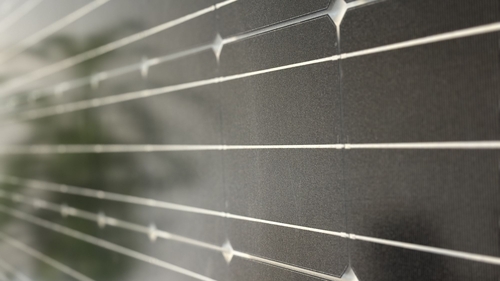What exactly is a Solar Panel or Solar PV?
9 May 2024

Sunlight, that is needed by life on Earth to flourish, requires approximately 8 minutes for it to reach and provide its benefits. In the past twenty years or so, this light has begun becoming a power source for few of our energy demands.
The photovoltaic effect, which is the process of turning light into electric power, was discovered in 1839 by Antoine Becquerel and Edmond Becquerel from France. However, it took around one hundred and fifty years for people to effectively utilize this finding through the creation of solar panels.
How does a solar panel work today?
Silicon at the heart of the photovoltaic principle
Solar panels work mainly because of the presence of silicon in them. Silicon, a substance we obtain from silica that is found in sand and is very prevalent on Earth. It possesses a crucial feature for generating electricity: it can conduct electricity under specific circumstances. It is not the only material with this ability, but it is preferred now because solar power, which uses silicon a lot, is becoming more common in producing electricity.
Silicon, similar to all things we observe, is composed of minuscule particles known as atoms. Every atom has a central part called the nucleus and there are negatively charged electrons orbiting around it. When sunlight hits the panel, it places particles in an 'excited condition' and they begin moving across silicon atoms. But at this moment, there is still no electricity generated.
How is an electric current generated?
When electrons (those small, negatively charged particles we discussed earlier) travel in a single direction, that is electric current. For this to occur with the silicon, it requires to be ‘'dopped'' a little bit . This process involves increasing the amount of electrons on one side of the panel and reducing them on the other side. In this manner, an electric potential is created which causes the electrons to move in a single direction: from where there are excessive electrons (negative terminal) towards where there is a deficit of electrons (positive terminal).
This is actually the same principle as a battery that we are trying to reproduce with our solar panels. Solar panels are composed of several layers, with one layer being mixed with phosphorus that has atoms having more electrons than silicon's. The lower layer is combined with boron, a material that has less electrons than silicon. It functions like a battery, where the negative terminal contains more electrons because of phosphorus and the positive terminal holds fewer electrons due to boron. When you link these two terminals together and when light reaches the surface of the panel, it begins to make electrons travel through silicon. This movement creates electric current which can be used to power many different things!
What are the different components of a PV installation?
Solar panels
These are one of the key parts with the structure. They transform raw energy from sunlight into electricity using a process we discussed earlier.
Solar structures
Solar panels are essential, but without support they're just just unusable! These structures not only provide a base for the panels, but also offer various configurations that secure the system while maximizing energy production through panel's tilt and orientation. It is incomplete to think about panels without considering their structures.It's a bit like thinking about the façade of a house without considering the foundations. Additionally, there exist multiple kinds of structures that can adjust according to different requirements:
-
Ground-mounted structures
-
Flat roof structures
-
Carports
-
Pergolas
-
Vertical walls
-
Structures for inclined roofs
-
Etc...
Usually, these structures are made for different kind of PVs and they're optimized to produce as much energy as possible. The "bifacial gain" value (energy from the back side) brought by a structure is an improvement that affects how much power can be produced by the solar panel.
Inverter
The panels produce a current that goes through the inverter. Its function is to change the direct current (DC) into alternating current (AC). We use this kind of electricity in our houses and businesses because it's the only one that our equipment can deal with. It is also redistributable on the grid.
Wiring
Basic element allowing to connect all the components of a solar installation. Depending on the size of the installation, the complexity can vary!
Batteries
Not mandatory but highly recommended, they allow storing and accessing electricity that was generated but not consumed during a previous period. This is useful during low production periods of the solar panels (by night).
To conclude…
At the time this article is written, we are only in the starting stage of solar deployment for most countries. What used to be a choice, status symbol and show of our environmental beliefs is now turning into necessity: not just to match up with increasing energy demand but also fulfilling requirements in decarbonization.